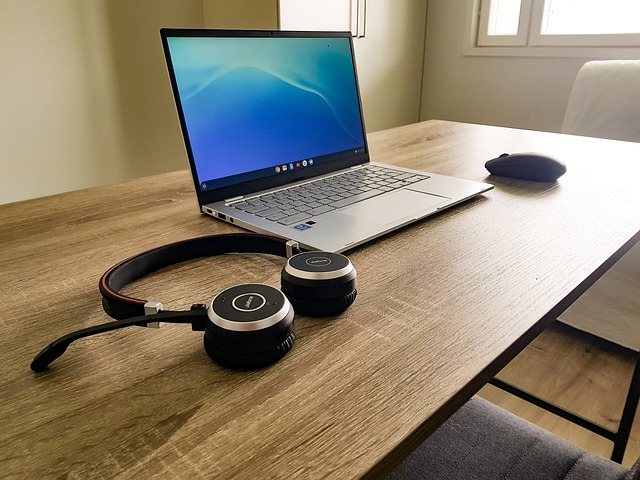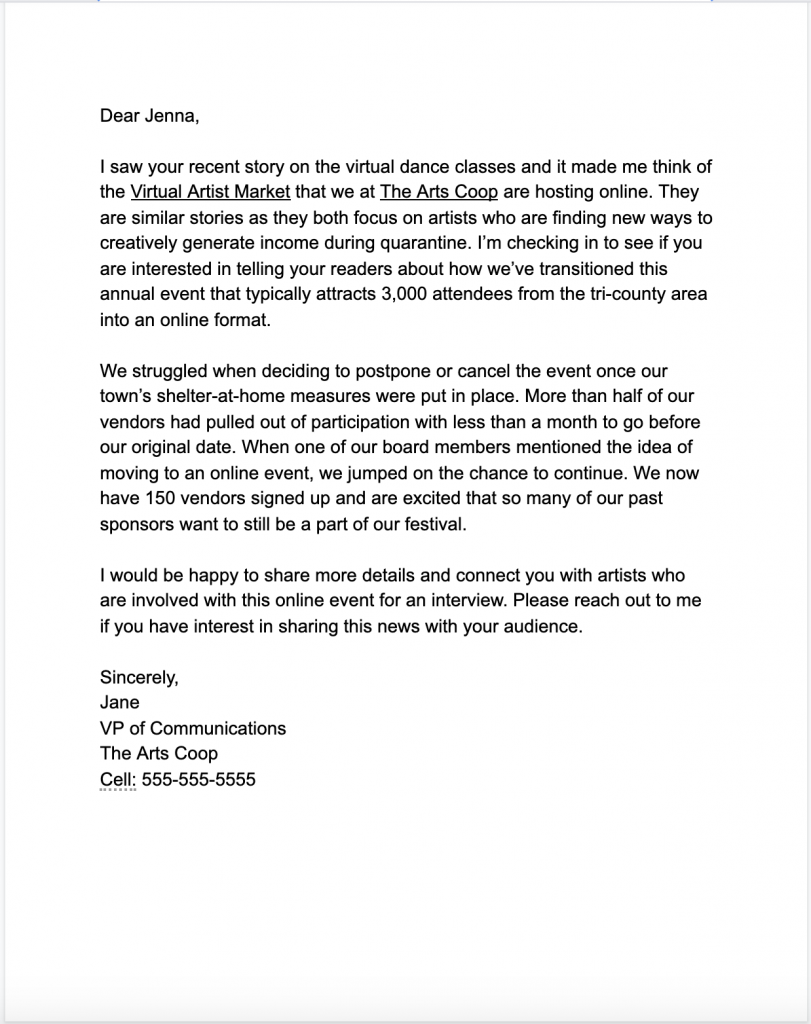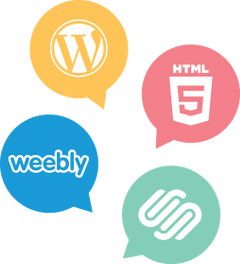 If you’re not getting the event attendance numbers you’re looking for, it’s a good idea to implement new promotional strategies. Here are five proven ways to boost attendance through promotion.
If you’re not getting the event attendance numbers you’re looking for, it’s a good idea to implement new promotional strategies. Here are five proven ways to boost attendance through promotion.
- Send messages via an email marketing platform
- Make posts and stories on social media platforms
- Enlist a committee
- Create a social media event
- Pitch your event to local media
First identify your target audience
Before you jump into promoting your event, consider the purpose of your event and the demographic characteristics of likely attendees. Narrowing your audience will help you choose the most effective ways to reach them. Would they be interested in the event based upon their:
- Identity – Do attendees have a specific trade, career, school affiliation, job status or other defining characteristic?
- Interests – Is this event geared toward people with certain hobbies (gaming, crafts, talents, etc.), activities such as sports, yoga or community service?
- Geography – Is the event geographically-specific — such as a virtual happy hour for local chamber of commerce members? If not, anyone who speaks the same language can attend! There are time zone considerations though if registrants are spread across different zones. It will be important to be clear in your communications regarding the time zone the gathering will be conducted from.
It may seem counterintuitive, but the more narrowly you define your target audience, the more interest you’ll garner. Some event organizers define their target audience as the “general public” in the hope that more people will come. However that’s not a good marketing goal as you’ll never be able to reach everyone in the general public to inform them of your event. And think about it; if you hear about an event that fits more than one of your own demographic criteria — such as your local alumni association online happy hour — you’re probably more interested in attending that than a general happy hour where you don’t know if the topics or people will be of interest to you. According to one study, marketers have found a 760% increase in email revenue from segmented campaigns. A segmented campaign is one that is just targeted to a specific group, area of interest or demographic.
Top 5 Ways to Promote Your Event
Once you’ve narrowed your audience, it’s time to make a list of the communications channels you’ll be using to reach them. You can use free tools to spread the word. Here are some options for broadcast messaging, social media and pure event promotion. Ideally you’ll establish channels that can be reused to promote your future events.
1. Send messages via a broadcast email platform
Use Mailchimp or another email marketing platform. As of this publication date, MailChimp offers a free account for up to 2000 contacts. You can use their service to send one-way communications promoting your event. You can create various audiences or groups within MailChimp and allow your website visitors to pick which things they want to hear about. Some people may want to hear about events while others might just want to receive news and updates. Communicating narrowly to a specific group will reduce subscribers from unsubscribing as they will be less likely to hear about things that don’t interest them.
2. Make posts and stories on social media platforms
Consider what social media platform(s) your target demographic use; that’s where you want to have a presence. For example, did you know that 53% of US college graduates are on LinkedIn? It doesn’t hurt to have one social account on each platform as long as you keep them all updated regularly. Go for quality over quantity in terms of how many platforms you choose to join as well as how many posts you make. Be cognizant that each platform has algorithms in place that determine when and if your followers may or may not see your messages in their social feed, so collect email addresses as your first priority over pushing followers to your social channels. Choices for organizations to have a social media presence (as opposed to individuals) include:
Don’t forget attractive graphics
When sharing the event on email and social media, you’ll want quality photos, illustrations, and/or an event logo be displayed on all of your posts and messages. Facebook posts with images receive 2.3 times more engagement than those without images. The images you pick should be reflective of the content that is presented. Event promotion image ideas:
- A preview photo of the host in the presentation environment or the host’s headshot
- A screenshot of a prior similar online event
- A photo of the finished product (this example would be relevant for an online craft or baking class)
- An infographic
- At minimum you can use a software like Canva to create attractive typography with the title of the event, a brief tagline and a colorful background.
Consider creating a series of images to use throughout the promotion cycle. You can post these on an ongoing basis leading up to the event in the event’s Facebook page and on your other social media channels.
Use stories to hype an event
Stories is a feature on Instagram and Facebook that allows users post photo and video that disappear 24 hours after the initial post. More than 500 million Instagram users are using stories on a daily basis. Event hosts can create and post stories prior to the event as well as during the event to garner more interest and remind potential attendees of what is happening. Potential story topics include:
- Short videos that speak to the transition to a virtual event. Past and new attendees will be curious how their favorite aspects of your event or conference are being transitioned to an online format. These videos don’t need stellar production values; they can be simply recorded on a phone. You can record yourself speaking to this topic or ask another team member or a key volunteer to do so.
- Short videos from a speaker(s) posted in the days leading up to the event. This story can be posted by you to the main account or posted by the speaker on their story and then shared to your organization’s story. It may be best to get the speaker to post to their own story so that your event gets promoted to their audience as well. In the video, they can speak to what they’ll be discussing or can announce that they’re looking for attendee questions in advance. If asking for attendee questions in advance, they can encourage attendees to reply to the story with those questions. If a speaker is going to post to their own story, their story needs to be public so that you can share it. Second, the speaker will need to tag your account in the story itself. Even if your organization and the speaker follow each other, you won’t be able to share each other’s stories without following these guidelines.
- Ask speakers to share your event promotion stories. You can expand the reach of your event promotion when speakers share your stories to their followers. You’ll need to be sure that the stories you post are public and that the speaker is tagged. You probably don’t want to tag all your speakers (if there are multiple) in one story; instead only tag a speaker when the story relates to them or their area of expertise.
- Ask vendors to share your event promotion stories. Do you have an online store associated with your event? If so, make stories highlighting vendors. Tag the vendors in those stories. Separately message the vendor and ask them to share the story to their story feed. Most vendors will be thrilled that they were highlighted and will want to spread the word.
- Hosting a long or multi-day event? Post stories that highlight what has already happened. This may encourage those who haven’t registered to opt into the remaining sessions.
3. Enlist a committee to help
The best form of communication is two-way as it is the most interactive. But since you can’t have face-to-face conversations with everyone in your event’s target audience, consider using a committee (old school) as well as creating a social media event (new school) to facilitate word-of-mouth promotion and a place for event-related discussion to occur.
Having an event committee can be a great way to spread the word to a wider audience. Although they intersect in places we all have different groups of professional and personal connections. If more people are invested in spreading the word about your event you’ll reach a larger audience.
Some ways committees can can promote your event are:
- Using the event’s Facebook and/or Twitter Share button to make encouraging posts about the event on social media. Note that a link should never be posted without some context. Committee members can add text to the post such as, “Join me at this upcoming online event where we’ll learn (value proposition for the event)! This is timely information for (demographic characteristic).”
- Spreading the word about the event on social media platforms where the committee member is active and your organization is not.
- The committee can email your MembershipWorks event link to their friends or colleagues who may have interest in your event. Draft a sample email so that it’s easy for them to just copy and paste the message into their email program.
- The committee should indicate that they are attending your event in your social platform (see more about creating an event on social media below) and should use any event tools available to invite others to the event within that platform.
Having a committee of people that share the goal of a successful event can help you not only get the word out to more people, but also fine tune the messaging and event format. You may want to list your committee members in your event’s description as a way to thank them. You could also consider setting up discount codes in your online event tickets that you share with committee members. If your organization has a lot of competitive members you could have different committees compete with each other for a prize or bragging rights in getting the most people to attend an event.
4. Create a social media event
Note that you should pay special attention to how you are creating the event; consider if you want to create it from your organization’s social media page or your own personal social media profile. You want to be sure you set it up to be a public — not private — event if you want your attendees to help spread the word to others.
- Facebook event: If your target audience tends to be Facebook users, a Facebook event is a great way to reach potential attendees. Due to Facebook’s algorithms, Facebook group members and those who have indicated interest in an event posted on Facebook are much more likely to see your posts within the event than if you just make posts for your followers of your Facebook page.One of the best features of Facebook events is that when someone indicates that they are “Going” or “Interested”, that activity will show up in their feed for their friends to see. In the Facebook event setup, you can add a link to your ticketing website, which in this case would be your MembershipWorks event page. Another tip is to invite others involved in the event such as a presenter or speaker to be a co-host through the event settings. They can then make posts within the event to help you build excitement. Content such as videos, photos and information hyping the event that are posted regularly within the event as well as your organization’s own Facebook page will lead to more sharing of the event.
- LinkedIn event: If your event is career or business-related, a LinkedIn event (a new feature launched in 2019) may be the right place to spread the word about it. You can add an External URL in your event that links to your event page within MembershipWorks where you can sell tickets.
5. Write a press release or pitch letter
 Local media outlets are sometimes looking for “feel good” stories that showcase the ingenuity of local organizations who are doing things creatively. It’s inspiring to hear about annual events that are continuing in some form online or new events that have sprung up that perhaps have reached an even larger audience without the limitation of geography. A cooking school or restaurant that is typically available only to local visitors can offer online classes to anyone in the world, especially if the lessons are recorded and offered to attendees who may want to watch during convenient hours for their time zone.
Local media outlets are sometimes looking for “feel good” stories that showcase the ingenuity of local organizations who are doing things creatively. It’s inspiring to hear about annual events that are continuing in some form online or new events that have sprung up that perhaps have reached an even larger audience without the limitation of geography. A cooking school or restaurant that is typically available only to local visitors can offer online classes to anyone in the world, especially if the lessons are recorded and offered to attendees who may want to watch during convenient hours for their time zone.
If you are doing something out-of-the box, write a pitch letter to see if you can find local media interest. Don’t forget to include local bloggers who may have a decent following as they might be more hungry for story ideas than a traditional media outlet. Create a media list of reporters and outlets that would typically cover your industry. Here are the high points of a successful pitch:
- Know to whom you are pitching. Pitch to a specific reporter at your local paper or TV station; mention a story that you have seen of theirs that resonated with you. The main point in doing this is to connect with the reporter rather than just asking them to do a favor. It shows you have done your homework as well.
- Mention why your idea would be interesting to the media outlet’s viewers/readers. Is it timely, fun, innovative, and/or attracting a wide following?
- Identify yourself and your role within your organization.
- Don’t shy away from challenges you’ve encountered if you formerly conducted this event in person. This makes the story more interesting.
- Mention statistics if available.
- Keep it short.
Sample event pitch letter for local media:
Dear Jenna,
I saw your recent story on _______________ and it made me think of the (event title) that we at (name of organization) are hosting online. They are similar stories because _________. I’m checking in to see if you are interested in telling your readers/viewers about how we’ve transitioned this annual event that typically attracts (number of) attendees from (geographic area) into an online format.
We struggled when deciding to postpone or cancel the event once our town’s shelter-at-home measures were put in place. More than half of our (speakers/vendors) had pulled out of participation with less than a month to go before our original date. When one of our board members mentioned the idea of moving to an online event, we jumped on the chance to continue. We now have (number of registrants/speakers/vendors) signed up and are excited that so many of our past (attendees/vendors/presenters) want to still be a part of (event name).
I would be happy to share more details and connect you with (speakers/vendors/board members) who are involved with this online event for an interview. Please reach out to me if you have interest in sharing this news with your audience.
Sincerely,
Jane
VP of Communications
XYZ Organization
(additional contact info here)
Bonus tip: monetize your webinar after it’s over
Some organizations are looking for creative ways to increase revenue and exposure for their virtual events. If you are just looking to gain more mileage from your events, consider uploading recorded online event videos to a YouTube or Vimeo channel. You’ll want to be sure that those who appear in the video are willing to have this content posted in this way. Learn now to link your YouTube videos to make them point back to your website; this will help your website with search engine results placement.
If you want to make money from the videos, you can use your membership software to sell memberships that allow access to pages with video content. Note that if you use MembershipWorks to protect members only pages containing videos that are uploaded to the WordPress media library or embedded as private links (from sites like YouTube or Vimeo), the video links could conceivably be re-shared by members with non-members as each video has its own direct link. Another option to consider is Vimeo, which allows you to sell videos online through their platform and can help you to promote the videos as well.




Comments are closed.